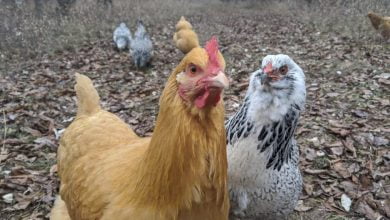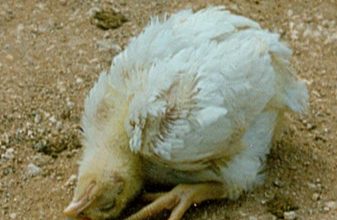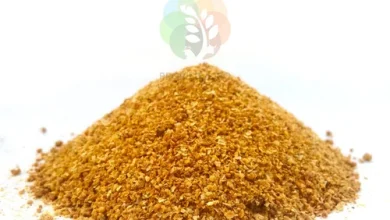BACKYARD KADAKNATH CHICKEN – REARING ALLEVIATE POVERTY OF POOR WOMEN AND LANDLESS LABORERS
Dr. G. Kalaiselvi & Dr. M. Malarmathi, Assistant Professor
Tamil Nadu Veterinary and Animal Sciences University, Chennai -51
Kadaknath Chicken which is also termed as Black Meat Chicken is one among the three such famous types available in the world. They are mainly available in three colors in common namely golden, penciled and dark black. Kadaknath chicken is one of the best poultry breeds of India which is native to Jhabua district of Madhya Pradesh (MP), India. Basically, Kadaknath breed is popular for its black meat and known as BMC (black meat chicken). Kadaknath chicken breed is famous for its meat quality, texture and taste and medicinal property. The demand for Kadaknath chicken is growing day by day and spread across most of the Indian states due to their excellent medicinal values. Especially these birds bear great medicinal value in homeopathy and useful in treating a particular nervous disorder. Basically, Kadaknath chickens are mainly reared by tribal communities in Bhil and Bhilala in the districts Jhabua and Dhar in the state of Madhya Pradesh (MP). The commercial scale of Kadaknath chicken raising especially in the states Kerala, Andhra Pradesh, Telangana and Tamil Nadu. Kadaknath chicken meat and eggs are in black colour.
The new Kadaknath production technology has reduced the mortality rate from greater than 50% and enhanced the survival percentage and overall profits in Kadaknath chicken farming. Kadaknath chicken have high feed conversion ratio and the birds can gain body weight of 1.10 to 1.25 kg in 100 to 125 days. Kadaknath chickens can be reared similar to country chicken or free range chicken. But it may require little more care initially to grow in controlled environment. Later they can be left freely in open field.
BLACK MEAT CHICKEN (BMC) IS AVAILABLE IN THE WORLD:
- Kadaknath – Native to Madhya Pradesh, India.
- Silkie – Native to China.
- AyyamCemani – Native to Indonesia.
ADVANTAGES AND BENEFITS OF KADAKNATH CHICKEN BREED
- Kadaknath chicken black meat has good medicinal values.
- Kadaknath chicken meat is good textured and flavored.
- Kadaknath chicken breeds are adaptable to any kind of environment either cool or hot
- Kadaknath chicken meat and their eggs are sold for high price in the market.
- This bird meat contains many kinds of amino acids, and vitamins when compared with other meat.
- This meat helps to increase blood cells count and haemoglobin.
- Some of the research shows Kadaknath chicken is said to be aids in curing pulmonary problems.
- The high levels of Vitamin and Phosphorous content present in Kadaknath Chicken boosts body metabolism to a great extent providing sustained energy levels at all points of time
- Another major contribution of Kadaknath Chicken to women’s health is its ability to solve menstruation related issues in them when consumed in a regular manner.
- Women who suffer from frequent abortions can benefit from it since it possesses the medicinal quality to control the same.
- The Kadaknath birds convert feed quickly into the meat (feed conversion ratio is high).
- The Kadaknath chicken eggs are used to treat headaches, post delivery problems, asthma and nephritis.
- Acute and chronic inflammation can also be cured when it is eaten regularly by people belonging to varying age groups. People who are suffering from Kidney related inflammation can benefit the maximum by eating it regularly.
- Kadaknath chicken is said to be good for women health as well.
- The tribal community in MP uses Kadaknath chicken blood in the treatment of chronic disease.
- The Kadaknath chicken eggs are also have good nutrition values and good for old people.
- Kadaknath black meat contains vitamins B1, B2, B6, B12, C and E, niacin, protein, fat, calcium, phosphorus, iron, and nicotinic acid.
- The Kadaknath breed is hardy and highly resistant for diseases and mortality is very low
- Unlike broiler chicken kadaknath can survive even on kitchen waste.
- The best advantage is, these birds meat has more protein, less fat and low cholesterol when compared to similar kind of poultry breeds.
- Kadaknath chicken weighs about 1.5 Kg after growing 6 to 7 months.
- Kadaknath is one of the rarest birds available in the world.
- Commercial large. scale farming of Kadaknath chicken defiantly give good profits if proper marketing channel is established.
- Some state governments like Madhya Pradesh and Tamil Nadu have incentive scheme for people who were interested in breeding the Kadaknath chicken.
COST OF KADAKNATH CHICKEN AND EGGS :
Because of the fact that these birds have superb medicinal values, their meat cost about 600 to 800 Rs/kg. As we said above, these bird eggs also nutritious, they are sold up to 40 to 50 Rs/egg in the market.
NUTRITIONAL VALUE OF KADAKNATH MEAT:
The following chart compares the Kadaknath nutritional values with other chicken breeds.
| Properties
Protein content
|
Kadaknath Chicken
25%
|
Other Breeds of Chickens
18 to 20% |
| Fat content
|
0.73 to 1.03
|
13 to 25% |
| Linoleic Acid
|
24%
|
21% |
| Cholesterol | 184mg / 100gm | 218.mg / 100gm |
Kadaknath Chicken Breed information:
| Particulars | Kadaknath |
| Weight of Day Old Kadaknath Chicks | 28 to 30 grams |
| Bird Body Colour | Jet black |
| Price for Parent Stock (chicks) | Rs. 20 to 22 |
| Body weight in 8 weeks | 0.8 0.9 kg |
| Period required to attain 1 kg of body weight | 13 to14 Weeks |
| Survival rate | 95 % |
| Period required to attain 1.5 to 2 Kg Body weight | Like Country Chicken |
| Total weight (male) | 2.3 to 2.5 kg |
| Total weight (female) | 1.6 to 1.8 kg |
| Quality of Meat | Black like pure country chicken |
| Taste of the meat | It tastes like country chicken. |
| Meat percentage without skin (dressed) | 65 % |
| Management/Maintenance | Low |
| Are these good for Commercial or Backyard poultry farming | Good for both |
| Age for first egg laying | 23 to 24 weeks |
| Broodyness | Less |
| Egg laying/month | 11-12 |
| Annual egg laying | 120 |
| Average egg weight | 40 to 45 grams. |
| Egg colour | Brown |
| Feed required | 50 kg for entire growth |
TIPS TO START KADAKNATH CHICKEN FARMING
- Get good breeds of Kadaknath birds from standard government and private poultry farms
- Make sure you bring day old chicks with proper vaccinations.
- Start with 30 to 50 birds and keep increasing the bird count as you gain the experience.
- Find out with poultry department of Agriculture University and veterinary universities for chicks and feed information.
- Some state government are providing incentives on these birds breeding, avail those benefits.
- For couple of weeks birds require proper care and provide necessary shelter /light /water/feed.
- Don’t start on large scale without knowing the poultry line of business.
- If you are starting a commercial Kadaknath chicken farming, make sure you establish a proper marketing channel.
- Follow the scheduled vaccination chart to avoid any bacterial and viral diseases.
CONCLUSION
Farmers, landless labor and poor widows can grow kadaknath birds in back yards. Kadaknath chickens are best suited for back yard farming rather growing on commercial scales. The meat quality and disease resistance nature of kadaknath chicken can create great revolution poultry industries
References :
- Mohan, J., K. V. H. Sastry, R. P. Moudgal, and J. S. Tyagi. 2008.Performance profile of Kadaknath desi hens under normal rearing system. Int. J. Poult. Sci. 43:379–381.
- Panda, B., and S. C. Mahapatra. 1989. Common breeds of poultry. Pages 6–18 in Poultry Production. ICAR, New Delhi, India.




